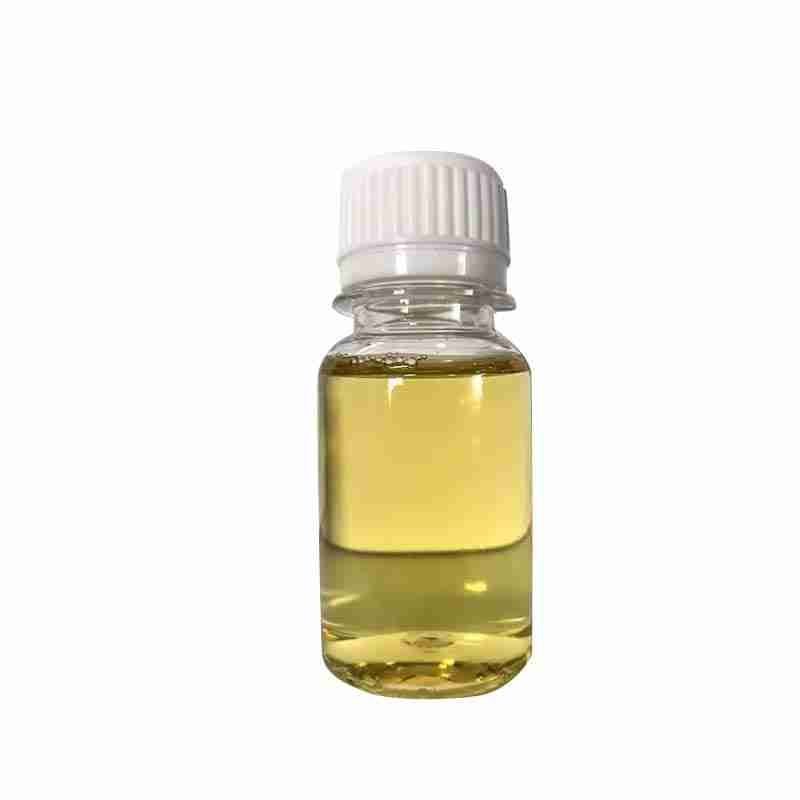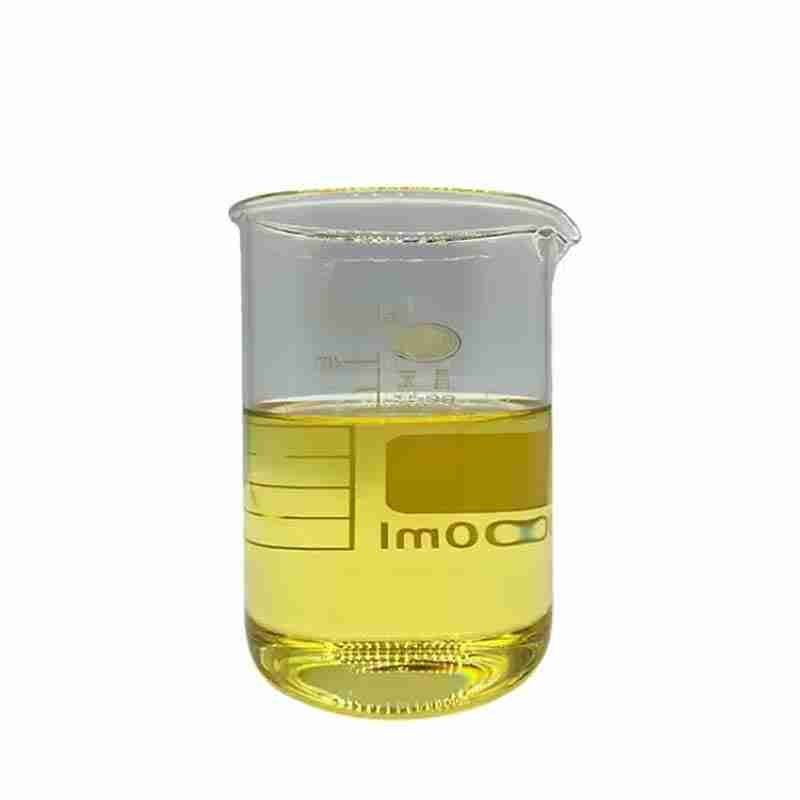Vitamin A Palmitate CAS# 79-81-2
Vitamin A ester derivatives mainly refer to its alkyl acid esters, such as vitamin A acetate, vitamin A palmitate, etc. Due to the instability of vitamin A, commercial vitamin A is available in the form of its ester. However, vitamin A acetate easily absorbs water and gets damp, while vitamin A palmitate is more stable than vitamin A acetate.
Vitamin A, commonly known as retinol, is an unsaturated monohydric alcohol with an ester ring. It is a yellow flaky crystal or crystalline powder. It is a fat-soluble vitamin. It is insoluble in water and glycerol, and soluble in alcohol, ether, hydrocarbon, Most organic solvents such as halogenated hydrocarbons. Retinol palmitate is an ester of retinol combined with palmitic acid, a saturated fatty acid that is the main component of palm oil. Retinyl palmitate is easily absorbed by the skin and then converted into retinol. It is a yellow or yellow-red solid or oily substance.
发送询盘
Vitamin A Palmitate CAS# 79-81-2
| Vitamin A palmitate Basic information |
| Product Name: | Vitamin A palmitate |
| Synonyms: | VITAMINAPALMITATE,LIQUIDINOIL,1MILLIONIU/G;VITAMINAPALMITATE,USP;[(2E,4E,6E,8E)-3,7-dimethyl-9-(2,6,6-trimethyl-1-cyclohexenyl)nona-2,4,6,8-tetraenyl] hexadecanoate;VITAMIN A PALMITATE(RETINYL PALMITATE)(RG);ALL-TRANS-RETINYLPALMITATE;VITAMIN-A-PALMITATE, STAB., 1750 U/MG;VITAMIN A PALMITATE LIQUID WITH TOCOPHERYL;all-trans-Retinol palmitate, VitaminA palmitate |
| CAS: | 79-81-2 |
| MF: | C36H60O2 |
| MW: | 524.86 |
| EINECS: | 201-228-5 |
| Product Categories: | BAYPRESS;Vitamins and derivatives;79-81-2 |
| Mol File: | 79-81-2.mol |
 |
|
| Vitamin A palmitate Chemical Properties |
| Melting point | 28-29?? |
| Boiling point | 546.51??C (rough estimate) |
| density | 0.9668 (rough estimate) |
| refractive index | 1.5250 (estimate) |
| Fp | 194?? |
| storage temp. | 2-8??C |
| solubility | Chloroform (Slightly), Ethyl Acetate (Slightly), Methanol (Very Slightly) |
| form | oil |
| Specific Gravity | 0.90??0.93 (20??) |
| color | Light Yellow to Yellow |
| Water Solubility | Soluble in chloroform, ether, and vegetable oils. Insoluble in water. |
| Merck | 13,10073 |
| BRN | 1917366 |
| BCS Class | 4 |
| Stability: | Light Sensitive |
| InChIKey | VYGQUTWHTHXGQB-YFAKFODJSA-N |
| LogP | 15.51 at 25?? |
| CAS DataBase Reference | 79-81-2(CAS DataBase Reference) |
| NIST Chemistry Reference | Vitamin a palmitate(79-81-2) |
| EPA Substance Registry System | Retinol, hexadecanoate (79-81-2) |
| Safety Information |
| Hazard Codes | T,Xn,F |
| Risk Statements | 63-53-61-11 |
| Safety Statements | 53-23-36/37/39-45-36/37-16-60 |
| RIDADR | UN1170 – class 3 – PG 2 – Ethanol, solution |
| WGK Germany | 3 |
| RTECS | VH6860000 |
| F | 8-10-23 |
| TSCA | Yes |
| HS Code | 29362100 |
| Toxicity | LD50 (10 day) in mice, rats (mg/kg): 6060, 7910 orally (Kamm) |
- 2
- 2-diallylpent-4-en-1-amine
- 4
- 95-16-9
- Ammonium sulfamate
- Benzothiazole
- cas:67889-00-3ح2
- cas:83524-75-8 | pigment black 32
- cas:928836-00-4 | 2
- cas:932745-70-5 | 4
- Chemical Minerals
- Coconut diethanolamide
- Daily Chemicals
- discount
- for sale
- General pvc resin
- hexyl D-glucoside
- in stock
- Lauramidopropyl betaine
- LAURIC ACID MONOETHANOLAMIDE
- Petroleum Additives
- Plasticiser
- Ploymers
- price
- PVC
- quotation
- Raw Materal
- Remove term: Petroleum Additives Petroleum Additive
- SODIUM ETHYL 2-SULFOLAURATE
Related Products
Chemical Name: 3-Hydroxybutyric acid
CAS No.: 625-71-8
Molecular Formula: C4H8O3
Molecular Weight: 104.1
Appearance: White powder
Chemical Name: Ammonium Iron(II) Sulfate
Synonyms: Diammonium iron bis(sulphate); iron (ii) ammonium sulfate
CAS No.: 10045-89-3
Molecular Formula: FeH5NO4S
Molecular Weight: 170.95
Chemical Name: Potassium Castorate
CAS No.: 8013-05-6
Molecular Formula: C57H107K3O12
Molecular Weight: 1101.74718
Appearance: Yellow Liquid
Succinimide is a heterocyclic organic compound and an important industrial chemical. It serves as a key intermediate in the synthesis of various pharmaceuticals, agrochemicals, and other specialty chemicals. Known for its reactivity and versatility, succinimide is widely used in the production of succinic anhydride, a precursor to many polymers and plasticizers, highlighting its significance in the chemical industry.
Butylated Hydroxytoluene (BHT) is a synthetic phenolic antioxidant commonly added to foods, cosmetics, and packaging to prevent the oxidation of fats and oils, thereby extending their shelf life. It is also used as a preservative in a variety of products, including rubber, petroleum products, and animal feed. BHT is recognized for its effectiveness in maintaining nutrient levels, color, flavor, and odor in food products . It is known to have a melting point of 69-71??C, a boiling point of 265??C, and is soluble in ethanol, acetone, and benzene, but not in water, glycerin, or propylene glycol . BHT is also used in some dietary supplements due to its antioxidant properties . However, it is important to handle BHT with care, as it can cause skin irritation and is considered harmful if swallowed .
1-Octanol, also known as Capryl alcohol or n-Octanol, is a clear, colorless liquid with a characteristic waxy odor. It is an alcohol with eight carbon atoms in its chain, making it a part of the aliphatic alcohol family. This compound is poorly soluble in water but is miscible with ethanol, diethyl ether, and chloroform . It has a melting point of approximately -15??C and a boiling point of around 196??C . 1-Octanol is used in the production of esters, plasticizers, and as a solvent or intermediate in the synthesis of various organic compounds. It also finds application in the fragrance industry as a fixative in perfumes and can be used in the formulation of flavor and scent compositions . It is important to note that 1-Octanol is flammable and should be handled with care, storing it away from sources of ignition and heat .
POLY(VINYL CHLORIDE-CO-ISOBUTYL VINYL ETHER) is a copolymer that combines the properties of vinyl chloride and isobutyl vinyl ether. This polymer offers a balance of rigidity and flexibility, along with enhanced chemical resistance and durability. It is commonly used in the production of films, coatings, and adhesives due to its excellent barrier properties against gases and moisture, making it ideal for packaging and construction applications.
Chemical Name: Choline salicylate
CAS No.: 2016-36-6
Molecular Formula: C12H19NO4
Molecular Weight: 241.28
Appearance: Red-Brown Crystal
Octocrylene is an organic compound widely recognized for its potent UV-filtering properties, making it an essential ingredient in sunscreens and other skincare products designed to protect the skin from harmful ultraviolet radiation. With the chemical name 2-(4-Methylbenzyl)-2H-benzotriazole-5-methyl, octocrylene is a stable and photostable molecule that provides broad-spectrum protection against both UVA and UVB rays.
This oil-soluble chemical is valued for its ability to absorb UV radiation effectively, converting it into heat without causing skin irritation or staining clothes. Octocrylene is often used in combination with other UV filters to enhance the sun protection factor (SPF) of formulations, ensuring a balanced and comprehensive defense against sun damage.
As a lipophilic compound, octocrylene is compatible with various cosmetic and dermatological formulations, contributing to the development of lightweight, non-greasy sunscreens. Its chemical structure allows for a high degree of safety and efficacy, making it suitable for a wide range of skin types, including sensitive skin.
In summary, octocrylene is a reliable and efficient UV filter, pivotal in the formulation of modern sunscreens that offer advanced protection against the sun’s harmful effects while maintaining skin comfort and product aesthetics.
Chemical Name: UV-120
Other Name: (2’,4’-Di-tert-butylphenyl 3,5-di-tert-butyl-4-hydroxybenzoate)
CAS No.: 4221-80-1
Molecular Fomula: C29H42O3
Molecular weight: 438.66
Assay: ≥99%(LC)
Chemical Name: Arabic gum
CAS No.: 9000-01-5
Appearance: powder
Chemical Name: STODDARD SOLVENT
CAS No.: 64742-88-7
Appearance: Colorless or Light Yellow Liquid



















